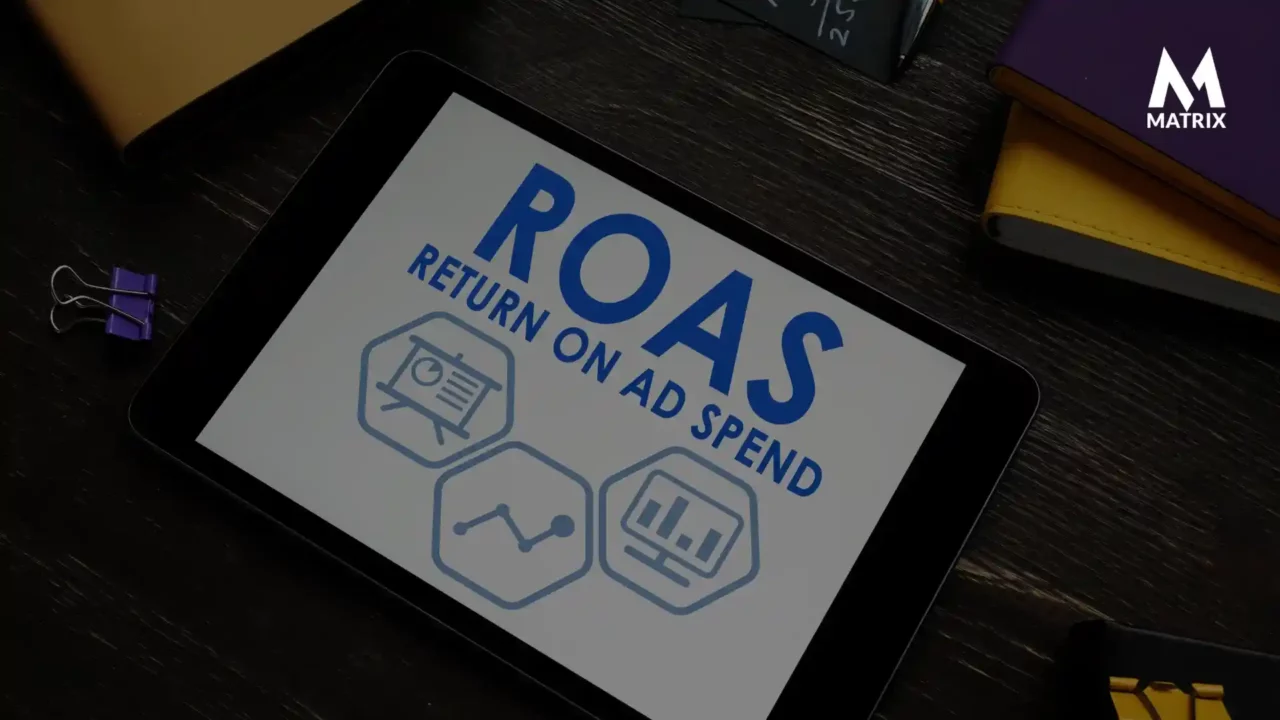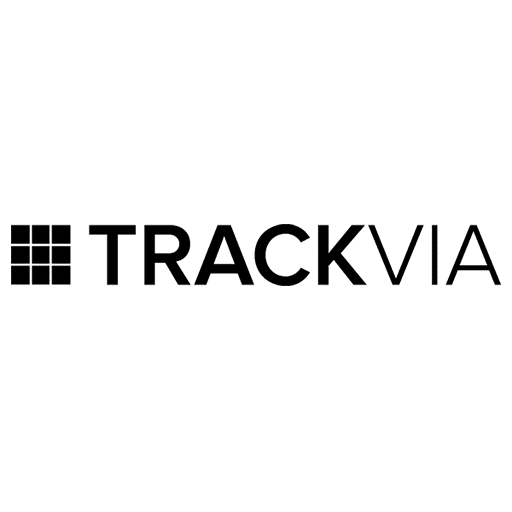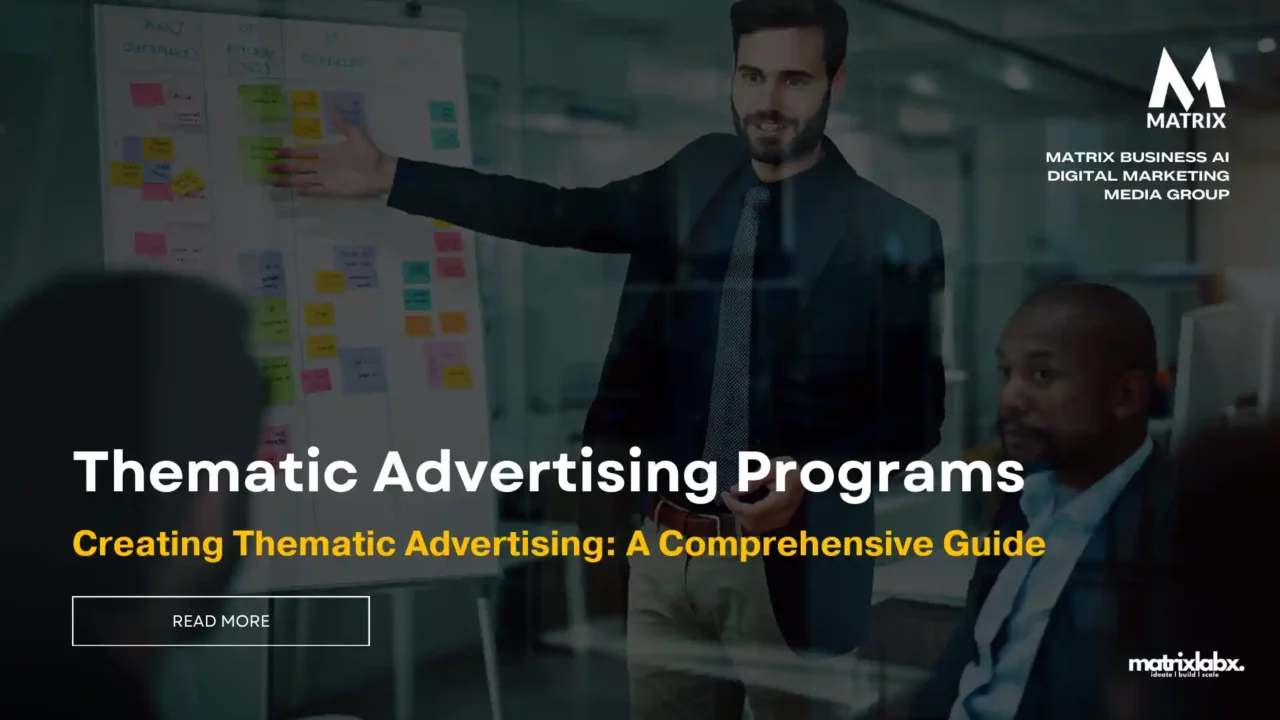Creating Thematic Advertising: A Comprehensive Guide
Learn How to Create Thematic Advertising: A Comprehensive Guide
Dive into the world of Thematic Advertising, a unique approach to crafting memorable campaigns that resonate with audiences. What is your cost per lead? Cost per customer acquisition? ROAS?
Sara’s Surprising Journey with Matrix’s AI-Driven Thematic Advertising
In the heart of a bustling city, Sara, a vibrant young entrepreneur, operated her small business, a boutique that sold handmade crafts. While she loved her work, her business needed help to attract the footfall she had hoped for.
She tried traditional advertising, from newspapers to signboards, but the results were underwhelming.
While sipping her vanilla latte on a sunny afternoon, Sara stumbled upon a peculiar online advertisement. It depicted a robot named Matrix, holding a sign that said, “Discover the power of thematic advertising!”. Intrigued, she clicked.
Matrix introduced itself as an AI-driven tool designed to revolutionize advertising strategies. “Thematic advertising,” Matrix explained with cute animated graphics, “is all about connecting with your audience through stories and emotions. It’s not just about what you sell but the story you tell.”
Curious and slightly skeptical, Sara decided to give it a shot. She signed up, and Matrix began its magic. The platform analyzed her products, her brand’s ethos, and her target audience. With its vast AI capabilities, Matrix identified a theme that would resonate with Sara’s audience: “Handmade with Love.”
With Matrix’s guidance, Sara crafted a series of ads that told stories of artisans passionately creating each product, pouring their love and dedication into every stitch and design. Each ad was a window into the soul of her boutique, and it wasn’t just about selling crafts; it was about sharing a piece of the artisan’s heart with the world.
The results were astonishing. The campaign was not only well-received but also went viral. People shared heartwarming stories, and the foot traffic to her boutique skyrocketed. But what truly left Sara awestruck was the return on her investment. With Matrix’s AI-driven thematic advertising, her ROI increased by a jaw-dropping 3074%! Customers were not just buying her products; they were buying into the emotion, the story, and the love that went into making them.
As the months passed, Sara’s boutique underwent a transformation. It became a hub where people didn’t just shop but shared stories and experiences and celebrated the beauty of handmade crafts. Matrix, with its thematic advertising, didn’t just increase her sales; it breathed life into her brand.
Sara often found herself reflecting on that sunny afternoon when she discovered Matrix. She felt grateful for taking that leap of faith, trusting in the power of stories, and letting an AI robot named Matrix guide her.
And so, in a bustling city where countless stories unfolded daily, Sara’s boutique became a beacon of success, a testament to the magic that unfolds when technology and emotions intertwine.
What is Thematic Advertising?
Thematic advertising is a strategy where ads are curated around a central theme or idea, often resonating with a broader campaign, event, or sentiment.
Unlike traditional advertisements, which focus on product features, thematic advertising explores emotions, stories, and values, making it more relatable and memorable for the audience.
Why Use Thematic Advertising?

- Emotional Connection: Themes that resonate with human emotions make your ads more engaging and impactful.
- Consistency: It provides a consistent message across various platforms, enhancing brand recall.
- Adaptability: Thematic campaigns can be easily adapted to various events, trends, or seasons, ensuring relevance.
The following industries use thematic advertising programs the most:
- Retailers utilize thematic advertising programs to promote seasonal sales and events, including Black Friday, Cyber Monday, and the holidays.
- Travel: Travel companies utilize thematic advertising programs to promote vacation destinations and activities, including cruises, beach vacations, and family vacations.
- Entertainment: Entertainment companies use thematic advertising programs to promote movies, TV shows, and video games.
- Consumer packaged goods (CPG) companies utilize thematic advertising programs to promote new products and seasonal flavors.
- Automotive: Automotive companies use thematic advertising programs to promote new models and special offers.
- Financial services: Companies utilize thematic advertising programs to promote new products and services, including credit cards and loans.
- Education: Education companies use thematic advertising programs to promote degree programs and courses.
- Healthcare: Healthcare companies use thematic advertising programs to promote new treatments and services.
- Technology: Technology companies utilize thematic advertising programs to promote new products and services, including smartphones, laptops, and software.
In addition to these industries, any business that wants to promote its products or services to a specific audience during a specific period can use thematic advertising programs.
Reimagining the Marketing Department
What if you could achieve 10x the output with a fraction of the team? Compare the traditional 10-person department to a lean, AI-First Marketing Operation.
The Traditional Department
A 10-person team focused on manual execution in siloed roles. High overhead, slow to adapt, and difficult to scale without significant cost.
The AI-First Operation
A 3-person team focused on strategy, augmented by an AI platform. Lean, agile, and capable of massive, scalable output with predictable ROI.
Productivity & Output Comparison
By automating execution, an AI-first operation can produce significantly more high-quality output, from content to campaigns, in the same amount of time.
Monthly Output Comparison
The Matrix Marketing Group Advantage
We transform your marketing function from a cost center into a lean, AI-powered growth engine. Our MatrixLabX platform acts as your tireless digital workforce, allowing your human talent to focus on what matters most: strategy, innovation, and customers.
The Financial Impact: Smarter Budgeting
The AI-first model dramatically shifts budget allocation. Instead of spending the majority on salaries for manual execution, you invest in technology that scales and media that drives direct growth.
Typical Monthly Marketing Budget Allocation
Here are some examples of thematic advertising programs:
- A retailer might run a thematic advertising campaign for the back-to-school season, featuring ads that showcase school supplies and clothing.
- A travel company might run a thematic advertising program for the winter holidays, featuring ads for ski resorts and other winter vacation destinations. Learn more about AIAdPad.
- An entertainment company might run a thematic advertising campaign for a new movie release, featuring ads that include clips from the movie and interviews with the cast and crew.
- A CPG company might run a thematic advertising program for a new product launch, featuring ads that showcase product samples and recipes that utilize the product.
- An automotive company might run a thematic advertising program for a new car model, featuring ads that highlight the car’s key features and benefits.
- A financial services company might run a thematic advertising program for a new credit card offer, featuring ads that highlight the card’s rewards program and low interest rates.
Thematic advertising programs can be a very effective way to reach your target audience and promote your products or services. By creating a thematic advertising program, you can position your brand as the go-to solution for your target audience’s needs.
Step-by-Step Guide to Using Thematic Advertising with Google Ads

1. Identify Your Theme:
Understand your target audience’s interests, pain points, and aspirations. This will help you choose a theme that resonates.
To identify your theme for thematic advertising programs, you should consider the following factors:
- Your brand identity. What are your brand values, and what do you want your brand to be known for? Your theme should align with your brand identity and effectively communicate your brand message to your target audience.
- Your target audience. What are the interests and needs of your target audience? What kind of content do they consume? Your theme should be relevant to your target audience and appeal to their interests.
- Your industry. What are the trends and challenges in your industry? What kind of content are your competitors creating? Your theme should be relevant to your industry and help you stand out from competitors.
- Your advertising goals. What do you want to achieve with your thematic advertising program? Do you want to increase brand awareness, generate leads, or drive sales? Your theme should support your advertising goals and help you to achieve them.
Once you have considered these factors, you can brainstorm theme ideas. Here are some tips for brainstorming theme ideas:
- Think about your brand’s unique selling proposition (USP). What makes your brand different from your competitors? Your theme could be based on your USP.
- Consider your target audience’s pain points. What challenges does your target audience face? Your theme could be based on helping them solve their problems.
- Look for trends in your industry. What are the hot topics in your industry? Your theme could be based on a current trend.
- Think outside the box, be bold, and create a unique and creative theme. The most effective thematic advertising programs are unique and memorable.
Once you have brainstormed a list of theme ideas, you need to evaluate them to see which fits your brand, target audience, and advertising goals best.
Here are some criteria you can use to evaluate your theme ideas:
- Relevance. Is the theme relevant to your brand, target audience, and industry?
- Originality. Is the theme unique and memorable?
- Appeal. Is the theme likely to appeal to your target audience?
- Measurability. Can you measure the success of your thematic advertising program?
Choose the theme that best meets all of your criteria. Once you have chosen a theme, you can develop your thematic advertising program.
Schedule an Appointment
Are you ready to redefine the marketing landscape and harness the power of AI to unlock unprecedented growth? Let’s connect and explore how we can orchestrate success together.
Here are some examples of successful thematic advertising programs:
- Nike’s “Just Do It” campaign. This campaign is based on the theme of motivation and inspiration. It encourages people to overcome their challenges and achieve their goals.
- Apple’s “Think Different” campaign is based on creativity and innovation. It encourages people to think outside the box and challenge the status quo.
- Dove’s “Real Beauty” campaign is based on self-acceptance and body positivity. It encourages people to embrace their unique beauty and feel confident in their skin.
These campaigns are successful because they are based on strong themes relevant to the brands and their target audiences. They are also all creative and original, which makes them memorable.
Following the tips above, you can identify the theme for your thematic advertising program and develop a campaign with a strong theme to help you achieve your advertising goals.
Achieve a Competitive Edge with Precision Market Segmentation and Strategic Positioning
2. Design Creatives:
Once you’ve chosen a theme, design your ad creatives around it. Ensure consistency in visuals, copy, and tone to make your campaign recognizable across platforms.
The following tips for designing your ad creatives around your theme for thematic advertising programs:
- Ensure your ad creatives align with your theme. All your ad creatives, from your banner ads to social media posts, should be consistent with your thematic advertising program. This will help to create a unified and cohesive experience for your target audience.
- Use visuals to reinforce your theme. Visuals are a great way to make your ad creatives more engaging. Use high-quality images and videos that are relevant to your theme.
- Write clear and concise copy. Your ad copy should be clear, concise, and persuasive. It should also be relevant to your theme and your target audience.
- Use a strong call to action. Tell your target audience what you want them to do, whether visiting your website, signing up for your newsletter, or purchasing.
Examples of how to design your ad creatives around your theme for thematic advertising programs:
- If your theme is “Back to School,” you could use visuals of students and teachers, classrooms, and school supplies. Your copy could focus on the benefits of your product or service for students and teachers, such as saving time or money or helping students to learn more effectively.
- If your theme is “Holiday Shopping,” you could use visuals of festive decorations, holiday gifts, and happy families. Your copy could focus on the benefits of your product or service for holiday shoppers, such as finding the perfect gift, saving money, or avoiding the stress of shopping.
- If your theme is “Summer Vacation,” you could use visuals of beaches, pools, and families enjoying their summer vacation. Your copy could focus on the benefits of your product or service for vacationers, such as making their vacation more relaxing or fun.
Following these tips, you can design ad creatives to help you achieve your marketing goals and promote your thematic advertising program.
Here are some additional tips for designing ad creatives for thematic advertising programs:
- Use your brand colors and fonts. Your ad creatives should be consistent with your brand identity. Use your brand colors and fonts to make your ad creatives stand out and be recognizable to your target audience.
- Use testimonials and reviews. Social proof is a powerful way to persuade your target audience to take action. In your ad creatives, include testimonials and reviews from satisfied customers.
- Test different ad creatives. Don’t just create one ad creative and hope for the best. Test different ad creatives to see which ones perform the best. You can use A/B testing to test different ad creatives against each other.
By following these tips, you can create ad creatives that effectively promote your thematic advertising program and help you achieve your marketing goals.
70% of agencies need help integrating AI solutions.
70% of agencies need help integrating AI solutions into their tech stack, citing a lack of interoperability as a major barrier. 85% of marketing agencies need more in-house expertise to manage and deploy multi-AI agent systems effectively.
3. Set Up Your Google Ads Campaign:
- Go to your Google Ads account.
- Click on the ‘Campaigns’ tab and then ‘New Campaign’.
- Choose the type of campaign you want (e.g., Search, Display).
- Set your campaign settings, including budget, locations, and other relevant details.
4. Keyword and Audience Targeting:
Use Google’s keyword planner to find theme-related keywords. Broad match types often work well for thematic campaigns.
Also, segment your audience based on demographics, interests, and past behavior that aligns with your theme.
As an SEO manager, I would recommend using AI prompts to improve your keyword and audience targeting in the following ways:
Keyword research: AI-powered keyword research tools can help you identify the right keywords to target for your content and audience. You can use AI prompts to generate a list of keywords related to your topic, filter the results by search volume, competition, and relevance, and even identify long-tail keywords.
Audience research: AI-powered audience research tools can help you gain a deeper understanding of your target audience. You can use AI prompts to identify your target audience’s demographics, interests, and pain points. You can also use AI prompts to identify the channels where your target audience is most active.
Keyword and audience targeting: Once you understand your target keywords and audience, you can use AI prompts to generate targeted content and ads. For example, you can use AI prompts to generate blog titles, meta descriptions, and ad copy relevant to your target keywords and audience.
The Skill Gap: Why 85% of Marketers Are Not Ready
The Skill Gap: Why 85% of Marketers Are Not Ready highlights the urgent need for upskilling in a rapidly evolving digital landscape. Advanced technologies like AI, data analytics, and automation are outpacing traditional marketing expertise, leaving most professionals unprepared to adapt and compete effectively.
Here are some specific examples of how to use AI prompts to improve your keyword and audience targeting:
Keyword research:
- Prompt: Generate a list of keywords related to “SEO for beginners.”
- Output: SEO for beginners, SEO basics, SEO tips for beginners, how to do SEO, SEO best practices, SEO tutorial, SEO guide
Audience research:
- Prompt: Identify the demographics, interests, and pain points of my target audience for my SEO services.
- Output: Demographics: small business owners, entrepreneurs, content creators, bloggers, webmasters. Interests: SEO, digital marketing, online marketing, website traffic, search engine rankings. Pain points: ranking in search engines, increasing website traffic, generating leads and sales from their website.
Keyword and audience targeting:
- Prompt: Generate a blog title and meta description for a blog post about SEO for beginners.
- Output: Title: SEO for Beginners: A Step-by-Step Guide. Meta description: Learn the basics of SEO and how to improve your website’s search engine rankings.
- Prompt: Create ad copy for a Google Ads campaign targeting small business owners seeking to enhance their website’s SEO.
- Output: Improve your website’s SEO and get more traffic with our expert SEO services. We can help you rank higher in search engines and attract more customers to your website.
Using AI prompts to improve your keyword and audience targeting, you can create content and ads more likely to reach your target audience and achieve your marketing goals.
Here are some additional tips for using AI prompts to improve your keyword and audience targeting:
- Be specific in your prompts. The more specific you are, the better the AI will understand your request.
- Use multiple prompts. If you are not satisfied with the output of a single prompt, try using multiple prompts instead. This will give you a variety of options to choose from.
- Edit and proofread the output. AI-generated content is not always perfect, so it is crucial to carefully edit and proofread the output before publishing it.
By following these tips, you can utilize AI prompts to enhance your keyword and audience targeting, ultimately creating more effective marketing campaigns.
5. Landing Page Consistency:
Ensure your ad’s landing page aligns with the theme. Consistency between the ad and landing page improves user experience and conversion rates.
Tips for aligning your ad’s landing page with your theme:
- Make sure your landing page is relevant to your ad. Your landing page should be relevant to the ad that brought visitors to your website. Visitors should be able to easily find the information or product they were looking for when they click on your ad.
- Use the same keywords on your landing page as in your ad. This will help ensure that your landing page is relevant to the visitor’s search query and is more likely to rank higher in search engine results pages (SERPs).
- Use a strong headline on your landing page. Your headline should be clear, concise, persuasive, and relevant to your ad’s theme and landing page.
- Use high-quality images and videos on your landing page. Visuals can help make your landing page more engaging and informative. Select images and videos that are relevant to your theme and landing page.
- Include a call to action on your landing page. Inform your visitors about the desired action, such as signing up for your newsletter, making a purchase, or downloading a white paper.
Here is an example of how to align your ad’s landing page with your theme:
Ad theme: Back to school
Ad copy: Save money on school supplies with our back-to-school sale!
Landing page:
Headline: Back-to-School Sale: Save up to 50% on School Supplies!
Body copy: Our back-to-school sale is the perfect time to stock up on all the supplies you need for the new school year. We have a wide selection of backpacks, notebooks, pens, pencils, and more at discounted prices. Shop now and save!
Call to action: Shop Back-to-School Sale Now!
This landing page aligns with the ad theme, as it promotes the back-to-school sale and features a wide selection of school supplies at discounted prices. The landing page also uses the same keywords as the ad, such as “back to school” and “school supplies.” The headline is clear, concise, and persuasive, relevant to the ad’s theme and landing page. The body copy provides more information about the sale and the available products. The call to action tells the visitor what to do: shop the back-to-school sale.
By following these tips, you can align your ad’s landing page with your theme and improve your chances of converting visitors into customers.
6. Monitor and Optimize:
Regularly check your Google Ads dashboard. Analyze which thematic ads are performing best and optimize accordingly.
Case Studies: Thematic Advertising in Action
1. Brand A: Holiday Euphoria
=>Theme: Celebrating the joy of holidays.
=>Campaign: Ads showcased families enjoying holiday products, aligning with the festive spirit.
=>Results: A 45% increase in sales compared to the previous non-thematic campaign.
=>ROI: For every $1 spent, they made $3.50 in revenue.
2. Brand B: Sustainable Living
=>Theme: Eco-friendliness and sustainable living.
=> Campaign: Ads highlighted their eco-friendly products, focusing on the importance of sustainability.
=>Results: A 30% uptick in website visits from environmentally conscious consumers.
=>ROI: For every $1 spent, they earned $2.80.
3. Brand C: The Sports Spirit
=>Theme: The passion and spirit of sports.
=>Campaign: Ads emphasized the thrill of sports, targeting enthusiastic fans during a major sports event.
=>Results: A 50% growth in product sales during the sports season.
=>ROI: For every $1 invested, they reaped $4.




Wrapping Up
Thematic advertising provides brands with an exceptional opportunity to connect with their audience on a deeper level.
By aligning with emotions, stories, and values, brands can create campaigns that are both memorable and effective in boosting sales and fostering long-term customer loyalty.
The ROI can be substantial when executed well, especially on platforms like Google Ads. It’s an investment in storytelling that pays off!
Transform Your Digital Presence with a Single Click
Are you ready to elevate your brand and drive exceptional growth? At Matrix Marketing Group, we blend creativity with data-driven strategies to deliver cutting-edge digital marketing solutions. Book your free consultation today and discover how we can help you connect, engage, and convert your audience like never before.

